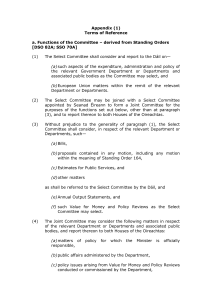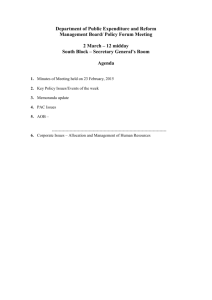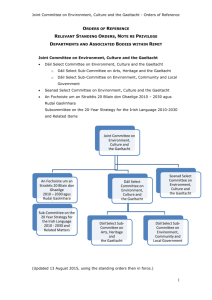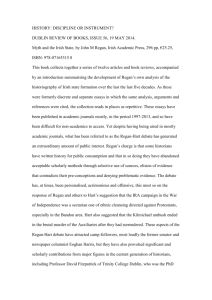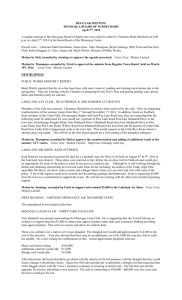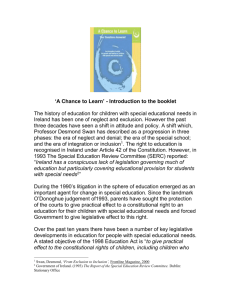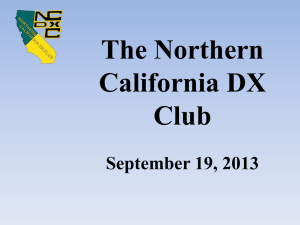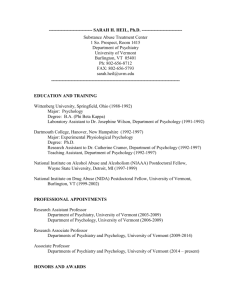Heil_The_Universe_as_we_find_it_v3
advertisement
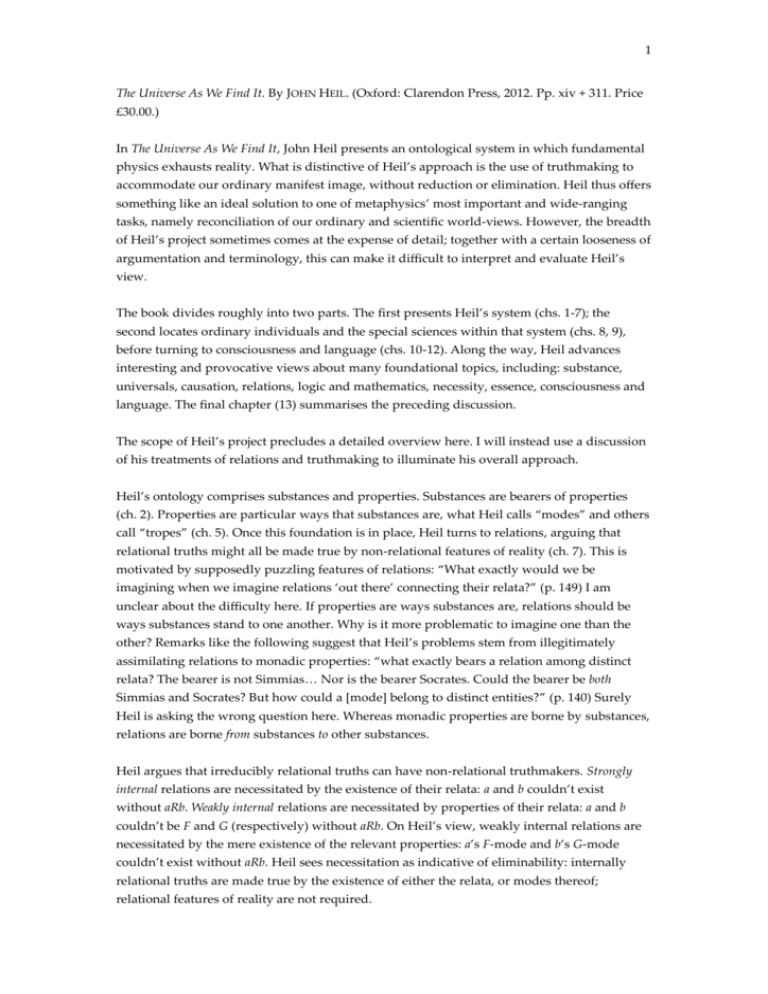
1 The Universe As We Find It. By JOHN HEIL. (Oxford: Clarendon Press, 2012. Pp. xiv + 311. Price £30.00.) In The Universe As We Find It, John Heil presents an ontological system in which fundamental physics exhausts reality. What is distinctive of Heil’s approach is the use of truthmaking to accommodate our ordinary manifest image, without reduction or elimination. Heil thus offers something like an ideal solution to one of metaphysics’ most important and wide-ranging tasks, namely reconciliation of our ordinary and scientific world-views. However, the breadth of Heil’s project sometimes comes at the expense of detail; together with a certain looseness of argumentation and terminology, this can make it difficult to interpret and evaluate Heil’s view. The book divides roughly into two parts. The first presents Heil’s system (chs. 1-7); the second locates ordinary individuals and the special sciences within that system (chs. 8, 9), before turning to consciousness and language (chs. 10-12). Along the way, Heil advances interesting and provocative views about many foundational topics, including: substance, universals, causation, relations, logic and mathematics, necessity, essence, consciousness and language. The final chapter (13) summarises the preceding discussion. The scope of Heil’s project precludes a detailed overview here. I will instead use a discussion of his treatments of relations and truthmaking to illuminate his overall approach. Heil’s ontology comprises substances and properties. Substances are bearers of properties (ch. 2). Properties are particular ways that substances are, what Heil calls “modes” and others call “tropes” (ch. 5). Once this foundation is in place, Heil turns to relations, arguing that relational truths might all be made true by non-relational features of reality (ch. 7). This is motivated by supposedly puzzling features of relations: “What exactly would we be imagining when we imagine relations ‘out there’ connecting their relata?” (p. 149) I am unclear about the difficulty here. If properties are ways substances are, relations should be ways substances stand to one another. Why is it more problematic to imagine one than the other? Remarks like the following suggest that Heil’s problems stem from illegitimately assimilating relations to monadic properties: “what exactly bears a relation among distinct relata? The bearer is not Simmias… Nor is the bearer Socrates. Could the bearer be both Simmias and Socrates? But how could a [mode] belong to distinct entities?” (p. 140) Surely Heil is asking the wrong question here. Whereas monadic properties are borne by substances, relations are borne from substances to other substances. Heil argues that irreducibly relational truths can have non-relational truthmakers. Strongly internal relations are necessitated by the existence of their relata: a and b couldn’t exist without aRb. Weakly internal relations are necessitated by properties of their relata: a and b couldn’t be F and G (respectively) without aRb. On Heil’s view, weakly internal relations are necessitated by the mere existence of the relevant properties: a’s F-mode and b’s G-mode couldn’t exist without aRb. Heil sees necessitation as indicative of eliminability: internally relational truths are made true by the existence of either the relata, or modes thereof; relational features of reality are not required. 2 Are there any non-internal relations? Causation is one candidate. So Heil argues that causation is non-relational, introducing the monadic notion of a causal process, understood as a mutual manifesting of powers, instead (ch. 6). Spatial relations are another candidate. So Heil argues that these are non-internal only on substantive assumptions about the ontology of space (pp. 146-7). Finding no other non-internal relations, Heil tentatively concludes that relational truths lack relational truthmakers. What should Heil say about the having relation between substances and their modes? Although he does not explicitly consider it, he will presumably treat having as internal, hence dispensable: since a’s F-mode, , couldn’t exist without being had by a, the mere existence of (perhaps together with a) makes it true that a has . Two kinds of problem arise. Firstly, substances become theoretically idle; they are not even pegs on which properties hang – hanging, after all, is relational. Secondly, nothing differentiates a’s connection with from a’s connection with any other substance’s modes; in what sense, then, does a have but not these other modes? This threatens the very idea of a world of differently propertied things. Heil rejects bundle-theoretic analyses of substance (chs. 2.2, 5.8). Remarks made in so doing suggest a response to this problem of having, by emphasising the intimacy of the substancemode connection: “Substances are not bare, featureless entities to which properties attach themselves as limpets… Every substance is itself some way or other.” (p. 15); “You cannot subtract the tomato from a way the tomato is. It is of the nature of a mode to be a mode, a modification, of some substance.” (p. 107). I understand neither the force of italicizing “itself” nor Heil’s notion of subtraction, though the idea seems to involve some kind of unification of substance with mode. Maybe the unification is so tight that no relational tie is required. However, this non-relational unification of distinct things is obscure. It is one thing to hold that ordinary relational truths lack relational truthmakers, quite another to make essential use of relational talk within ontology, whilst rejecting corresponding relational features of the ontology. Another comment suggests a different approach to substance-mode unification: “Ways the tomato is are entities in the sense that the tomato’s being the ways it is makes a qualitative and dispositional difference to the tomato.” (p. 107) Unfortunately, Heil does not discuss this interesting idea further. The apparent suggestion, however, is a predicative analysis of modes: to say that a’s F-mode exists is just to say that a is F. The having of modes then becomes non-relational because, as Bradley’s regress plausibly shows, predication cannot be analysed as a relation between entities. Whether it resolves the worries about having, this approach conflicts with Heil’s view. The existence of a’s F-mode is analysed via a’s being F, rather than conversely. So although a’s F-mode exists, it is explanatorily idle; it does not even explain what it is for a to be F. It is therefore unclear whether Heil’s rejection of relations can be sustained. I now turn to truthmaking. 3 Heil uses truthmaking to articulate the idea that our ordinary conceptual scheme provides but one way of describing the world of fundamental physics: our ordinary descriptions of reality are made true by fundamental physics (pp. 163-8 and elsewhere). Heil thus endorses premisses (1) and (3) of this argument: (1) It is true that tomatoes exist. (2) So: tomatoes exist. (3) Truths about tomatoes are made true by aspects of fundamental physics. (4) Tomatoes are not aspects of fundamental physics. (5) So: truths about tomatoes are not made true by tomatoes. Since (4) is not at issue, Heil is committed to: tomatoes exist but don’t make it true that they exist. This is puzzling. Although tomatoes are not substances on Heil’s view, they exist nonetheless, as “quasi-substances” (ch. 2.4-2.5). So why don’t tomatoes make it true that they exist? Why can’t quasi-substances be truthmakers? Heil sees ontology as the study of truthmakers. Against the idea that ontology concerns everything there is, Heil says: “Ontology enters only when you turn your attention to the nature of the truthmakers.” (p. 164). However, this does not explain why some things fail to be truthmakers, nor why ontological enquiry should be so restricted. Insofar as ontology seeks a maximally general systematisation of reality, it outstrips the study of truthmakers. Heil claims that ontology and truthmaking concern the “deep story” about the natures of ordinary things. What does this mean? Heil tells us that the job description of fundamental physics is to provide this deep story (pp. 164-5 and elsewhere). Absent an independent account of this deep story’s import, and the interest of truthmaking, one thus suspects Heil of conflating two projects: (i) providing a maximally general account of all reality; (ii) locating the correlates within fundamental physics of the objects and properties of our ordinary world-view. Heil wants to defend the idea that our ordinary conceptual scheme and fundamental physics share a single subject-matter. The present concern suggests that truthmaking is the wrong tool for the job. Truthmaking connects non-semantic aspects of reality with truth-bearers. Since tomatoes are not truth-bearers, truthmaking cannot connect them with fundamental physics. A relation between non-semantic phenomena is required, which is just what truthmaking cannot provide. It is an open question whether admitting such a relation between distinct entities would vitiate Heil’s project. NICHOLAS K JONES Merton College, University of Oxford
